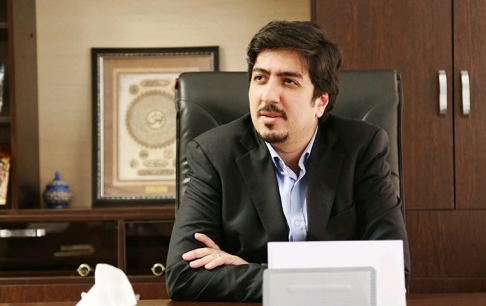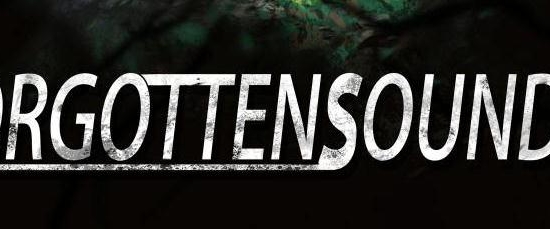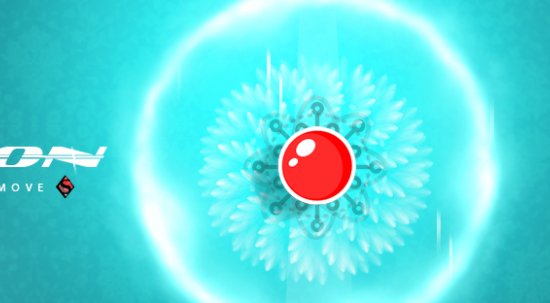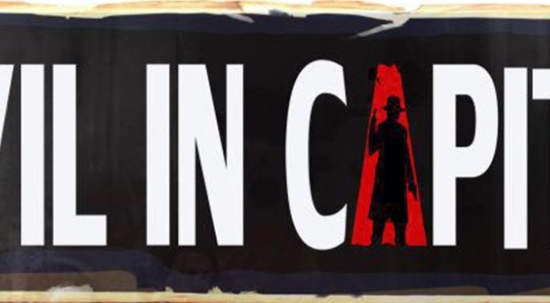
In this episode of SIGGRAPH Spotlight, ACM SIGGRAPH International Resources Committee member Afsaneh Rafighi (computer scientist, Simba Technologies) is joined by Hasan Karimi (president, Iran Computer and Video Games Foundation). The two discuss the international games community, SIGGRAPH’s role in worldwide, collaborative game development, and how Karimi is working to transform Iran into an industry leader.
FULL PODCAST TRANSCRIPT (English)
Afsaneh Rafighi (AR): Hello and welcome to our CG podcast. My name is Afsaneh Rafighi and today I have the honor of interviewing Hasan Karimi. Please tell me about yourself, your background and what you do?
Hasan Karimi (HK): Thank you very much for this chance. I have bachelor’s degree in computer engineering in one of the universities in Iran, as you may already know. I have worked for a couple of years in a video game development company and made something like two or three video games. It was a premium game, and it was an adventure game, a-point-and-click adventure game. Based on the decision I made, I became one of the board directors of a foundation in Iran called Iran Computer and Video Game Foundation. It’s kind of a semi-governmental organization responsible for helping video game developers in Iran. Couple of years ago, I became the CEO of the foundation, and I am still working at the same job, trying to expand the influence of our game development community to the world.
AR: So have you heard of SIGGRAPH and what SIGGRAPH does?
HK: Yes, of course. Well, even during my bachelor years, I knew about ACM and what ACM does and also about SIGGRAPH, and while I was working on some of the games, I met Amir Hossein Erfani. He was responsible for ACM SIGGRAPH in Iran; he was trying to have an ACM SIGGRAPH chapter in Iran, so that’s how I knew about it. I know it is an annual conference for computer graphics and technologies related to it, and the great purpose of it is to bring all of the expertise related to the field together, and it makes sense because when concerning CG it’s totally different from traditional graphic or art. Deliver a quality CG in video games, cinema, animation, etc. means to have a group of people with different experiences in modeling texturing technical artists and even programming to work together.
AR: Awesome, it’s great that you know so much about it. About other international communities, have you worked with other communities such as SIGGRAPH?
HK: We have IGDA chapter in Iran; I don’t know if you know about it. It’s an international game development association chapter. It’s a game development association that we have a chapter in here. But that’s all I know of. But I don’t know any other international communities related to the video games working in Iran.
AR: But about the recent conference that you held… If you want to explain about that. I know you had more than 40 guest speakers from foreign countries attending. That could be also introduced as an international community that you had collaboration with.
HK: Yeah, exactly. In terms of community, I meant established international communities like SIGGRAPH or IGDA. But we tried to form an event in Tehran a year ago to bring international people to Tehran and you know make some networking connections with our game developers, and try to bring international knowledge to Iran while doing our best to publish Iranian games outside. So this event, for example, which is called TGC (an abbreviation for Tehran Game Convention), is being co-organized by a well-known event organizer called Game Connection, which is based in France. We brought something like 40 international speakers from 20 different countries from U.S. to Canada to France to almost all of the countries in Europe, to Japan or South Korea, and also we brought something like 25 international publishers, so they could have lots of meeting with our game developers, and our game developers were pushing hard to publish their games globally.
AR: That’s awesome that’s really cool stuff. So can you compare this working experience you had with working with the teams in the country and the international community? How do you see that difference?
HK: Well, when you work in an international community it means you share lots of knowledge and experience together, which is very necessary for high tech industry. Also, you get to know current trends and even concerns related to the industry the community is based on. For example, I know IGDA is trying to decrease the crunching time of game development for some of the companies around the world, and they are trying to have another association. It might be relevant to the situation you currently have in your country, or it might not. If it is relevant you might get some help from that and can get updated, but if not relevant at least you know in upcoming years you are going to have the same situation in Iran.
AR: Awesome, you brought up a great point. I just wanted to ask you about this: What is it that is trending in Iran today – the things that students or researchers are most interested in? Even the region, I noticed in the conference you brought up the name as Gamistan, which was really cool. I was like this is a real cool name. If you could explain more about that?
HK: Exactly, the Gamistan thing you mentioned is one of the things we are doing to internationalize our game industry. Internationalization is our top most priority right now. We are working in an industry with a global market, and we are trying out our best to get as many possible shares from this global market. This competition we currently have is not fair though we are having a lot of difficulties regarding to publishing of Iranian games in Google Play or app stores, steems, etc. But game developers are trying to find their way in to the international market at the moment. They are mostly focusing on free-to-play games in Iran. Most of our game developers are working on those type of games, mobile games mostly, and there are some game developers who are working on battle royal games – I don’t know if you know about this genre. For example, PubG or Free Fire or Fortnight are very popular in Iran like the rest of the world. So we are trying to make battle royal games only for our market, so we can bring Iranian game developers together using that game.
AR: Right, awesome. For someone who wants to work in Iran – let’s say they are living in another country, and they are interested to come and meet with the talented people in Iran. Do you think there is a specific topic or discipline they should look out for?
HK: I think there are many artists and freelancers working on international projects already. They are accepting these jobs as outsource because making this kind of art in Iran is less expensive. Comparing to the rest of the world, some of the greatest artists we have are working on international projects at the same time as national ones. You know that Iranian art and culture is waiting to be explored by the international community. From the tile work in Isfahan and the artistic form related to it, to the miniaturist painting from Iran. These kind of art forms are not very well known around the world. And one of the medium that can be used for this purpose is of course video games. So we are trying to expand our cultural influence to the world, Iranian culture using video games. I think art is what makes the difference; it’s not about design or programming. It’s about the art that makes a different from other games being developed from the rest of the world.
AR: Right, so any notable companies, labs, or researchers in your region that you would recommend us to keep an eye on? To see them how their progressing to promoting them?
HK: Thank you very much for doing so. I sent you a comprehensive list of companies in Iran working on video games. As you may know, we have a local community in Iran called CGARTS.ir. You can check out the website, though the man behind the community left Iran and currently lives in Netherlands, so the activity of the website has been postponed since two years ago. But he is trying to find another nominee to get the job and handle all the stuff. So the arts you currently see on the website are for two years ago. There are some accelerators working on video games; they are doing a great job. One of them is Ava Games. Those guys have lots of independent game developers working in their office, and they are mostly making international games. Also, the Medric Company is working on great games at the moment. But for the community, its CGArt. It’s a little a bit outdated at the moment, but I think it’s going to be updated soon.
AR: So, just a parenthesis here. Do you see a communication between academia and production field? How is that collaboration, do you get a lot of students, researchers, that are going to production field?
HK: Exactly, this is the same reason last year we established and organized an official academic conference related to video games in Iran. We are trying to have this conference each year in a different university in Iran. This year is a different university from previous one. So what we are trying to achieve is to exactly connect these academia regions that the students are currently studying and connect it to the industry we currently have. For example, TGC is mostly industrial thing. It is not very academia, but this conference we have, which is called DGRC, which is going to happen in 3 months, is going to accept papers from all universities around Iran and publish in a journal or an international journal. I think the backbone of game industry is the academia. The problem we currently have in Iran is that we don’t have any university teaching master’s degree or bachelor’s degree in video game development at the moment. We are trying to push that because when students study a bachelor degree in video game development, it makes a lot of sense for that student to work in that industry, but if the major is just computer engineering, that student might go into network or security or other different fields. So by having these kind of specific degrees in our universities, our industry is going to grow even more.
AR: You are absolutely correct. So how do you see the future of international collaboration in your region?
HK: That’s a very complicated subject. With the withdrawal of USA from JCPOA I think it’s going to be hard. We have shown nothing is impossible. Just as I told you before, two weeks ago, we finished an event called TGC 2018. We had lots of speakers, lots of publishers from around the world, the number of the speakers and publishers increased by 50% comparing to last year. And it was when two months ago withdraw from JCPOA. So they knew about this kind of withdrawal. I think we should be happy to work in an industry that one of its messages in previous years has been “game without borders,” and most of the companies and experts in this field are against constraining one country from test of the world. And what we are doing and what our game developers are achieving, despite the current situation, proves this fact. I think this high tech industry is very different from traditional industries in terms of you know blocking one country from entering international collaboration. No one believes in this kind of action.
AR: So you do you think Iran can become an art-hub in the coming future for people who want to experience new things in that region or area or as you call it, the Gamistan area?
HK: Yeah, I can talk more about Gamistan area. But frankly speaking, I cannot answer this specific question for the art, but for one of its forms, which is video games. We are planning to do so. And I think for my region, the most powerful event for networking with others is currently happening in Tehran, which is called TGC. In order to get participation of other countries, we formed this imaginary region called Gamistan. This Gamistan region consists of 33 countries, and all of these countries are currently in underdevelopment state. So this is very similar to Iran; we are trying to accept their games inside of Gamistan awards. Something like almost 20 video games were submitted from these countries this year, and I think 11 countries participated in this event. It’s not very big right now because it was the first year, but I think it’s going to even grow for the upcoming years. The whole idea behind the Gamistan and TGC is to make Tehran and Iran the hub for video game business in the region, and I think it makes sense because we have something like 2,700 individual game developers in Iran. We have more than 100 companies and teams working on video games. Comparing to the other companies in the region this is the most statistics that you can get. So it makes sense that Tehran should be the hub for the game business in in the region.
AR: Thank you, those are very valuable information you just shared. I appreciate that. So aside from these, can you give us some fun facts about Tehran and reasons for people to come and visit this beautiful country?
HK: I think you might be even able to answer this question because you have lived most of your life in Iran.
AR: From your point of view I appreciate if you could share?
HK: Iran is not the country currently being shown on some news channels. You can find anything in Iran really, from deserts to jungles to seaside. And even skiing! Some people don’t believe that we have ski sites in Tehran. When we bring our international speakers and publishers in the past two years, we tried to let them explore Iran, so after the event finished they went to Isfahan, they went to Shiraz, they went to Yazd. Some of the stayed in Iran for almost a month; they tried to discover all of these different areas in Iran. Iran is a very big country, so when you think about the ecosystem, the natural ecosystem I mean, you can go to south and see desert, you can go to north and see the sea and all of the jungles, or you can go to north western part of the country and experience the coldness in weather and things like that. So I think it makes sense for people to have some kind of excuse to come to Tehran for the artist or for the expertise working in video games. I think TGC was that excuse, that they come to Tehran for two years, and then they go to different cities by their own and try to discover on their own.
AR: That’s awesome – that’s what the whole point is to bring international communities. Kudos to you guys. So any final comments that you have for our listeners here?
HK: I wish you another successful SIGGRAPH event in Vancouver this year. I really believe that sharing is caring, and we should be proud for it. That’s one of the purposes of SIGGRAPH. For example, Amir Hossein, who was the president of SIGGRAPH chapter in Tehran, I know he saved lots of money five or six years ago to attend SIGGRAPH event, which was in Hong Kong or Tokyo (don’t know exactly), but he tried to go there and expand his network and tried to get connected to the international community, so that’s what we are trying to do. All of us are pushing this industry to a degree regardless of wherever we are. Some of us might be in Iran, some might be in Canada; we will be faster and more efficient if we work together to do this.
AR: Absolutely correct. This was amazing Hasan, thank you very much.
HK: Thank you very much
AR: Hope you have a great time ahead of you.
HK: Thank you I wish you good luck and have a good day.
Download audio file:
Gaming in the Middle East




